Vladimir Putin made his way to Saudi Arabia twelve years after his first trip to Saudi Arabia. In recent years, Russia has been able to improve its economy by not only utilizing energy exports, but also gradually increasing its power resources, demanding a greater role in regional and global equations. Foreign Minister Adel al-Jabir says in the shadow of Saudi Arabia that Vladimir Putin’s visit to Saudi Arabia is a “historical” event. He has political motives for describing it as such, but he does not say so explicitly.
America’s vacancy, economic interests, or the strategic importance of the region for global security are all incentives that makes Vladimir Putin to travel to Riyadh, which in the 21st Century version of the Middle East, looks more and more like it is undergoing an unexpected transformation. Having shown for years that he has been trying to bring Russia back to a peak of past power and influence, he has transformed the violent war-torn Middle East into a playground full of opportunities, like a permanent lift crediting the situation. Hence, Moscow is on the global stage. The limited Moscow-Riyadh relations in 2008, the aftermath of the Red Army’s invasion of Afghanistan and the formation of a puppet communist government in Kabul became worse because of the Saudi support to the Mujahideen (in line with US policies in this area) and their inactive relations after dissolution.
In addition to America’s extensive and traditional relationship with Saudi Arabia and the country’s recent need to utilize state-of-the-art services, commodities and industrial products that relieve relative backwardness in modern technology, Russia has been open to competition with the US, Europe, China, Japan and South Korea. The Russian and Saudi economies are not complementary, One way to overcome this tangible disadvantage is through mutual investment and the use of state-of-the-art technology to implement joint ventures, which announces a $5billion contract for five joint projects that Moscow and Riyadh are developing.
PUTIN AND THE MIDDLE EAST
Only a decade ago, the yen was in the hands of the US and its European allies, except for regional actors, with the pulse of the Middle East. The US military presence and its broad coalition in the Persian Gulf, the occupation of Iraq, as well as Washington’s strategic relationship with Arab kingdoms, such as Saudi Arabia, Kuwait, Bahrain, the United Arab Emirates and Qatar left no room for others. Meanwhile, among non-Western powers, China is still not interested in playing a geopolitical role beyond its sphere of influence in East Asia, and Russia is more concerned about losing the former Soviet republics’ collapsing dominoes to the West.
The Soviet Union during the Cold War was a major player in the Middle East, which had important allies in countries such as Iraq, Syria, the Yemen and Egypt. Even in countries such as Iran, Turkey, and Oman, it supported influential, but at the same time, favorable parties. At the same time, the historical relationship between Moscow and Tel Aviv was significant to both sides, which, beyond the Middle East, were blended with ideological leftist commonalities and ethnic affiliations. This history allowed Putin no opportunity to increase his influence.
Speaker Pelosi: "I also pointed out to the president I had concerns that all roads seemed to lead to Putin. The Russians have been trying to get a foothold in the Middle East unsuccessfully, and now the President has given them an opportunity." pic.twitter.com/Zv0EDTAyl6
— The Hill (@thehill) October 18, 2019
Russia’s relative strength to become more active in Saudi Arabia is the increased export of military products and the opportunity to challenge the relative monopoly of the US and European market in Saudi Arabia – a potential opportunity for Moscow to successfully sell its S-400 missile defense system to Turkey.
ENERGY AND THE FUTURE OF OPEC: THE AXIS OF TALKS
Both countries play a very active role in the oil market although they are competitors in the oil market, but in some cases, they have a common interest in sanctioning Iran, partly offsetting Iran’s oil shortage by increasing its oil production.
During a visit last month by Dr. Fatih Birol, the chief executive of the International Energy Agency to Washington, and his meeting with Secretary of Energy Rick Perry, it was announced that US oil production would reach more than 5 million barrels a day in three years. The approximation is equal to the daily output of the two countries, namely Saudi Arabia and Russia. Rising US oil production will be a threat to Russia and Saudi Arabia. Given the increase in US oil production, Russia and Saudi Arabia appear to be able to prevent their share of the world market from being reduced by planning and adopting a common policy in the oil market.
♦Is it cunningly courting little Satan to lure him away from big Satan, or is it simply economics; or both?
Russia is building a global Energy Empire spreading from KSA Iran to Venezuela etc
♦By doing so Putin/Russia's becoming THE essential Powerbroker!https://t.co/mvXVPa1Ejk— Vεrαciti»ßot (@Veraciti_Bot) October 13, 2019
Increasing America’s share of the world oil market means reducing the share of other major oil-producing countries. If Iran’s sanctions are lifted and Iran and the US can resolve their problems by negotiating (though in the current situation it seems difficult to do so), competition in the world oil market will increase further. Russia, meanwhile, wants Saudi Arabia to invest in its LNG projects and to buy LNG. By investing in Russia’s LNG industry, Aramco also seeks to address part of its demand for natural gas and to become an exporter of LNG. Will there be an agreement during Putin’s visit? The upcoming OPEC summit and the issue of increasing or decreasing oil production in OPEC and non-OPEC member countries due to the volatility of oil prices are also cases in which the two countries appear to take a similar stance during Putin’s visit to Riyadh. During a meeting with the Saudi crown prince, Vladimir Putin also stressed the goal of the two countries’ cooperation “to promote peace and stability in the region and to consolidate the global energy situation.”
INCREASED TRADE VOLUME BETWEEN THE TWO COUNTRIES
Despite the huge potential in both countries, the volume of trade between Saudi Arabia and Russia last year was about $1.5 billion. This is an increase of about 2% compared to year 3. The two countries’ officials are not satisfied with the current volume of trade. The need for increased trade volume between the two countries was emphasized in the long-term strategic partnership agreement signed between Russia and Saudi Arabia in 2007, and is expected to increase in the short term by signing numerous contracts during Putin’s trip.
The Yemeni crisis and Iran-Saudi policies toward this crisis are likely to be one of the issues discussed during Putin’s meeting with Saudi leaders. Trump’s decision to withdraw US troops from Syria will open up more possibilities for Russia’s role in Syria, though some political observers believe Trump’s decision is only to influence the US presidential election and does not want developments.
#SaudiArabia’s #KingSalman & CP #MbS received #Russia’s President Vladimir #Putin during his 1st visit to the #KSA in 12 years. 🇸🇦 & 🇷🇺 agreed to establish Commercial Attache between them, inked 20 agreements in energy, space, tourism etc & held the 1st Economic Committee meeting pic.twitter.com/zxIHwtpO2o
— EU-Gulf Info Centre (@EGIC_) October 14, 2019
Last month’s drone strikes in the Aramco refinery prompted Saudi Arabia and other major energy-producing countries in the region to pay particular attention to the importance of security of energy supply and energy infrastructure. The missile and the rest are Russian ammunition and weapons. Putin pays special attention to arms industry and has always called for increased Russian arms exports Russia had offered to provide Saudi Arabia with its S-8 air defense system after the Saudi oil attack. Saudi Arabia’s purchase of the system is expected to face a US backlash that sent some 3,000 troops to Saudi Arabia following an attack on Saudi oil facilities.
TENSIONS BETWEEN IRAN AND SAUDI ARABIA
In recent months, tensions in the region have increased with the attack on oil tankers and the Aramco refinery policy, raising tensions in the region of energy-producing and consuming countries. Increasing tensions have made these countries seek to mediate between Iran and Saudi Arabia through the use of active diplomacy. Tension in the region is a good opportunity to continue the presence of large powers like Russia in the region. Commenting on Russia’s stance on attacks on tankers Putin condemned such attacks on tankers in the Gulf: “It makes no difference who is behind these attacks. Is wrong.”
INTERVIEW: Russian President Vladimir Putin says Moscow is working now to create free trade agreements with Israel and Egypt, and Iran is also part of it. “I told them we have good relations with KSA and UAE.”https://t.co/SWnO1D9NZM https://t.co/4seltSFffI pic.twitter.com/sTul91Pszz
— Arab News (@arabnews) October 13, 2019
Putin’s stance on the need for Iran to negotiate with the United Arab Emirates and Saudi Arabia to resolve the problems shows that after playing an active role in the Syrian crisis, it intends to be active and constructive in other regional crises. The increase in the country’s power resources, which is caused by the increase in energy exports, has led to its increasing role in the international arena and in the Middle East in particular. With the continued US policy towards the region, Russia’s future presence and influence in the region’s political and geopolitical equations should continue to increase.
REPORT: Saudi visit signals Putin's growing Middle East influence#Russia #KSA @NicoleHajal
(Video)https://t.co/rOtXiuuccV— LBCI Lebanon News EN (@LBCI_News_EN) October 14, 2019
Both Tehran and Riyadh have sent important signals in recent weeks of interest in reducing tensions and preventing direct military clashes. Nevertheless, the wall of mistrust between the two countries has good reasons, and the suspicion that has fueled Middle Eastern diplomacy is a major obstacle to restoring Iran-Saudi relations. If Putin succeeds in alleviating this tension – or perhaps resolving it – he will achieve a brilliant advantage that will bring him more than just two key players in the Middle East in addition to global credibility.
Ultimately, the strategic relationship between Saudi Arabia and the US is deeper and more fundamental than it could easily revolutionize in the short term. The warmth of the Riyadh-Moscow relationship is a sign of the fact that Saudi Arabia is trying not to put all its eggs in one basket. If six decades of close relations with the United States does not make Washington a true “partner” for Washington, the Saudi kingdom has other options – options that do not have the power and credibility of the United States but are apparently keen to become key players in the Middle East.


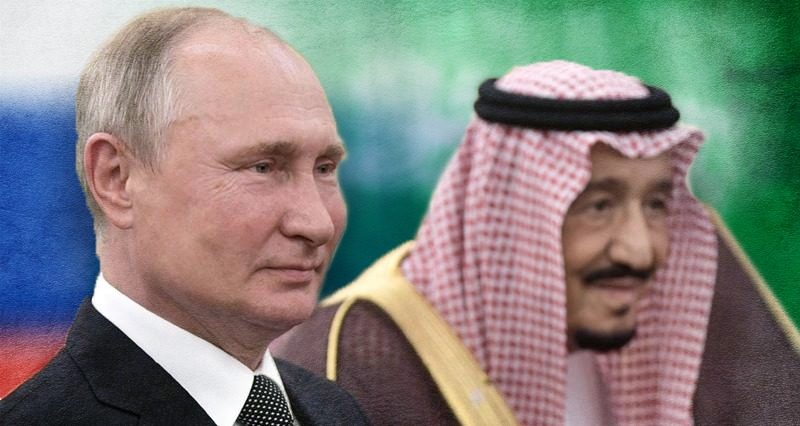
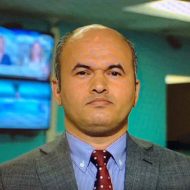
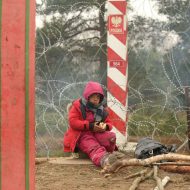
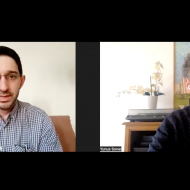

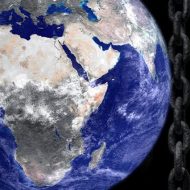

Leave a Reply